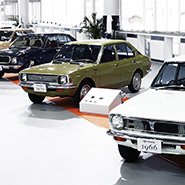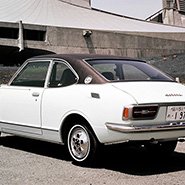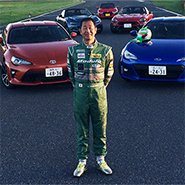Nov. 03, 2016
Generations of the Corolla and their Corresponding Eras (2)

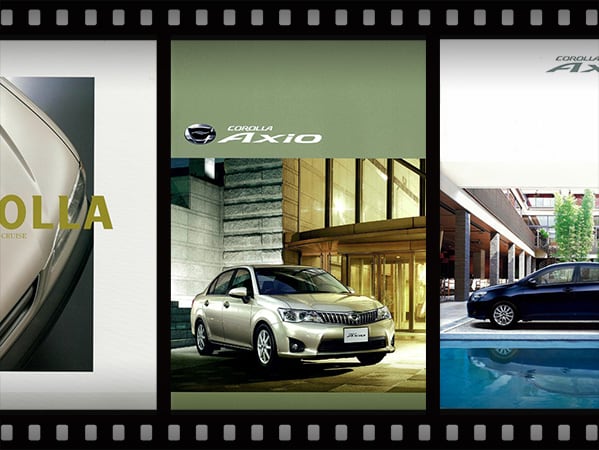
The Seventh Generation Corolla: A High-Class Corolla Modeled After the Celsior
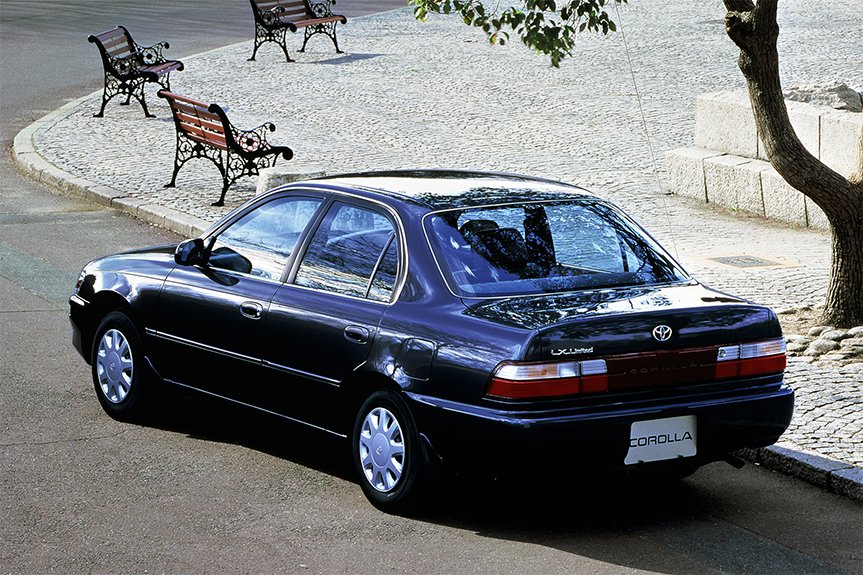
In a further step toward luxury following the sixth generation, the seventh generation Corolla featured extremely high quality interior and exterior. The ample volume of the body rivaled that of the flagship model car of the time, even going so far as to evoke the impression of being a miniature version of the Celsior. The engine lineup featured 1.3, 1.5, and 2 liters diesel engines, as well as two types of 1.6 liter engines. The first of those was the 160ps sporty twin cam engine, while the other was known as a “high mecha twin cam” DOHC engine that emphasized efficiency over power despite featuring 115ps. The “high mecha twin cam” engines eventually broke out of this class to become the primary engine for Toyota cars. A four-wheel drive model was also added to the lineup in 1991.
1991: Collapse of the Bubble Economy
While this was technically the year that the bubble had burst, the economy was still relatively favorable for the general public around that time, and news at the time continued to remain upbeat. One example was the announcement of the engagement of the sumo wrestler Takanohana Koji in 1992. As one of the two “Wakataka brothers”, Takanohana was at the forefront of sumo popularity, this news had shocked the nation. Swimmer Kyoko Iwasaki also garnered attention when she won the gold medal at the Barcelona Olympics, where she made a charming comment that “this is the happiest moment of my life” as a 14-year-old middle school student. Furthermore, hit products during that year included Air Jordan sneakers and G-Shock watches that became so popular among the youth that they were often resold at a premium. The phrase, “Kin is 100, and Gin is 100 too” became the jingle of the year in 1992, which was made popular by the famous pair of 100-year-old of twin sisters, Kin and Gin.
The Eighth Generation Corolla: The Pursuit of a Slim Body Design and New Derivative Models
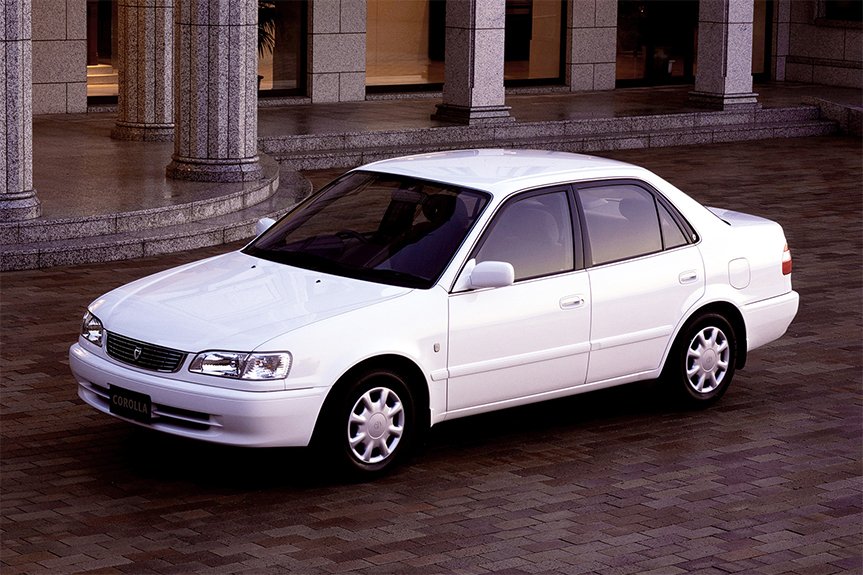
Taking a step back from the seventh generation, which was viewed as too luxurious at times, the eighth generation Corolla returned to the original Corolla concept of a simple and convenient compact sedan. While many components were carried over from the previous generation, the eighth generation still managed to achieve approximately 50 kilograms in weight reduction. Other than the flagship model, which featured a 4A-G model 1.6 liter DOHC and VVT engine (165ps), all other models featured high mecha twin cam engines with a lineup of 1.3, 1.5, and 1.6 liter models. Many new derivative models were also created in addition to the basic four-door sedan. In addition to the wagon, van, and the familiar Corolla Levin two-door coupe, the new lineup formed a complete Corolla family which included the Corolla Ceres four door hard top and the Corolla Spacio minivan.
1995: The Post-Bubble Era of Both Anxiety and Expectation
As the popularity of the Wakataka brothers continued despite the rise of rivals such as Akebono, the biggest news in the sports world was the entry of Hideo Nomo and his tornado pitch into major league baseball. He was the first in a line of Japanese players entering the major league which continues until today. His games were broadcast live, during which the nation focused on his every move, and he won the Rookie of the Year award. The Japanese people were proud that he became popular not only at home, but in the US as well. However, it was this year that Japan had faced one calamity after another, such as the Great Hanshin Earthquake and the Tokyo subway sarin attack by the Aum Shinrikyo cult.
The Ninth Generation Corolla: Restarting From the Beginning for a Modern Elegance
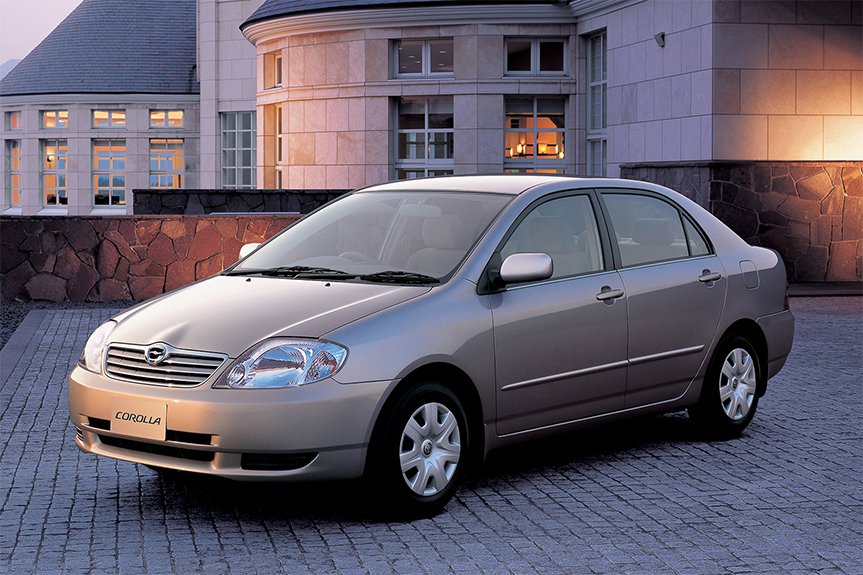
The ninth generation saw the Corolla being reborn from its traditional conservative image to an image of modern elegance. For this generation, the Levin sports model which had continued on from 1972 was discontinued, and the popular wagon’s model name was changed to Fielder. The platform for the lineup was developed from scratch, featuring a body that reached the maximum limits allowed for the so-called “five number” class of compact car in Japan. The interior space was also greatly increased by extending the wheelbase by 135 mm. The engines for the lineup were also upgraded to engines using a variable valve timing and lift mechanism (VVT-i) in 1.3, 1.5, and 1.8 liter models with an additional 2.2 liter diesel model. The ninth generation Corolla was also the first to feature the Vehicle Stability Control (VSC) system to prevent side skids and a traction control (TRC) system.
2000: The Eve of a New Age that is filled with Hope
The popular word this year was, of course, “millennium.” While the 21st century technically began in 2001, the year 2000 was considered to be a nice round number, and many events were held throughout Japan, which helped to create an overall mood of excitement. The 2000 yen note was issued in commemoration of this turning point. However, there was also the “Y2K” problem, in which certain computers were expectedly unable to recognize the date 2000, and were expected to cause numerous malfunctions by resetting to the year 1900. The performance of women athletes at the Sydney Olympics attracted great attention, and popular phrases at the time included “at best, gold medal; at least gold medal” by a famous Japanese Judo player Ryoko Tani as well as “Q-chan”, which was a nickname for a marathon runner. They had both won gold medals at the Olympics.
The Tenth Generation Corolla: Introduction of Japan Specific Models
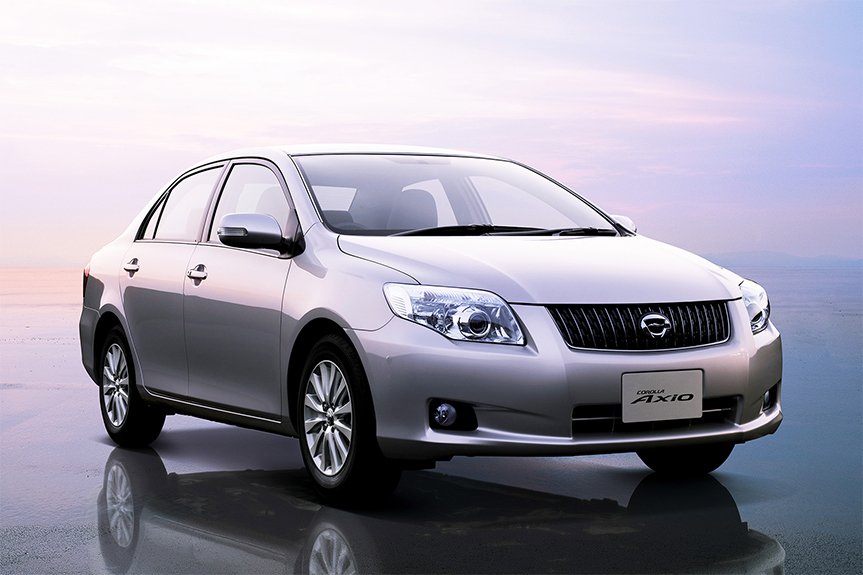
While the Corolla had used the same platform worldwide up to the ninth generation, the sub-name “Axio” was assigned beginning with the tenth generation for a Japan-specific design which differed from overseas models. The lineup included the four-door Axio sedan and the Fielder station wagon, while the overall image maintained that of the ninth generation. The 1.3 liter engine was discontinued, while a 1.8 liter engine with dual VVT-i was added to the 1.5 liter engine with VVT-i for a two engine lineup. The lineup used a super CVT transmission, but the 1.8 liter model included a seven-speed sequential mode. Toyota considered this lineup the “stallion of practical cars” with every model including a standard backup camera that is useful when backing up or parking in garages.
2006: A Year for Japanese Sports Around the World.
Figure skater Shizuka Arakawa won Japan’s first gold medal at the 2006 Turin Winter Olympics. The Ina Bauer figure skating move which she had used, involving bending backward while skating, not only became a popular catchphrase for that year, but also started a social phenomenon as many tried to actually imitate her. In the realm of baseball, Japan was the first winner of the World Baseball Classic under the leadership of Manager Sadaharu Oh. At the same time, Japan managed to make it to the final round of the World Cup in Germany.
The Eleventh Generation Corolla: The First Ever Downsizing and Introduction of Hybrid Models

While the ninth and tenth generation Corollas had made maximum the allowed dimensions for the so-called “five number” compact cars in Japan, the eleventh generation returned to the original Corolla appeal of being compact and easy to use. The platform was renewed accordingly, and the total length was reduced by 50 mm. This was the first model change in the Corolla’s history which resulted in a smaller car. The lineup kept the standard four-door Axio sedan and the Fielder wagon, while a newly developed 1NR-FE model 1.3 liter DOHC engine with dual VVT-i was added to the greatly improved 1.5 and 1.8 liter engines. From 2013, hybrid models were added to both the Axio and Fielder lineups using an optimized system which was developed for the Aqua. These boasted a gas mileage of 33 km/L (JC08 mode).
2012: Opening of the Tokyo Skytree to Symbolize the Dawning of a New Era
The biggest news in the year 2012 was without a doubt the completion of the Tokyo Skytree in Sumida Ward, Tokyo. At 634 meters, it is the tallest independent broadcast tower in the world. It features cutting edge technology and engineering which is typical in Japan, such as the extreme high-speed elevator, and is a popular tourist destination in the area. The Japanese people were also overjoyed when Dr. Shinya Yamanaka of Kyoto University won the Nobel Prize for the successful creation of iPS cells. The year also saw the entry of numerous LLC companies into the airline industry which leveraged on their low pricing advantages.






